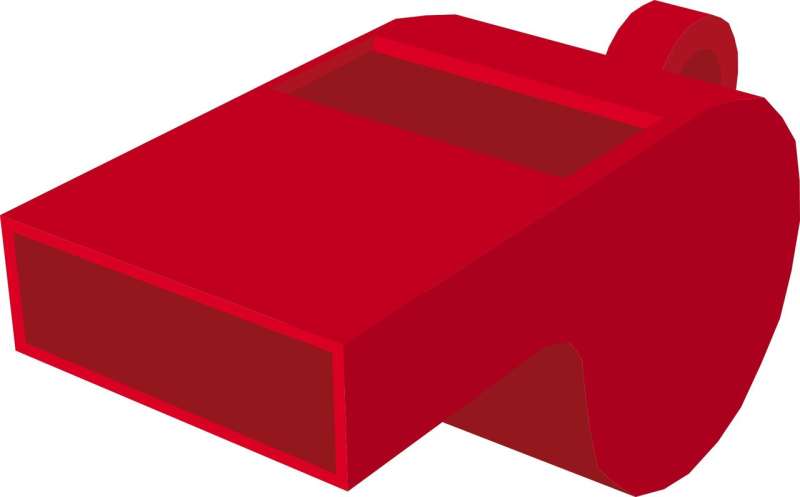How loud is too loud when it comes to sports whistles?

How loud is too loud when it comes to whistle tweets? Referees and others using whistles on the job need a simple way to determine whether it's harmful to their hearing, so a group of researchers set out to put it to the test and to provide some clarity and damage risk criteria for impulse noise exposures.
To do this, the group carefully measured and analyzed the acoustic signature of 13 brands of whistles identified as the "most commonly used" by 300 sports officials—both indoors and outdoors. They will present their findings during the 177th Meeting of the Acoustical Society of America, May 13-17, at the Galt House in Louisville, Kentucky.
Acoustic evaluations of these whistles were first performed within an empty gymnasium, and the researchers discovered that the sound output of the whistles was quite loud—reaching levels between 100 to 120 decibels.
"Whistle tweets are common for people participating in or officiating sports," said Captain William J. Murphy, U.S. Public Health Service, a physicist with the Hearing Loss Prevention Team at the Centers for Disease Control and Prevention's National Institute for Occupational Safety and Health. "A listener can exceed their maximum safe daily exposure within just a few seconds of whistle use."
The researchers also explored the sound power measurements of the same whistles outside because "sound power measures the energy radiated from an acoustic source," Murphy said. "A source that has 100-dB sound power level may be quite intense close to the source, but farther away it may become inaudible due to the spreading of sound over an imaginary surface that increases in area with distance."
Sound power is typically measured with a source surrounded by a series of microphones on the surface of an imaginary hemisphere at a known distance from the center. The object under test is positioned at the center, and the assumption is that sound propagates out from the object through the hemisphere's surface. Sound pressure over the surface is then integrated (summed) to estimate the sound power of the device under test.
The group filtered their recordings into 31 frequency bands to understand which frequencies contain the most energy.
"Our work involved having to identify the individual whistle tweets in the recordings, and we settled on using a 0.45-second time window to get consistent sample length for each tweet," Murphy said. "Power was calculated within each band, and then the overall power is determined by summing across the bands."
What did they find? The majority of the sound power is within the 3,000- to 5,000-hertz bands. "As the whistle effort increases, the peak sound power levels increase from about 70 dB to 100 dB," Murphy said. "The energy at frequencies above 5,000 Hz increases from about 50 dB to almost 80 dB. Peak sound pressure levels at the ear of the whistler range between 70 to 105 dB for low effort, 85 to 118 dB for medium effort, and 102 to 121 dB for high effort. The sound power maps over the hemisphere provide a visualization of the directionality of the whistle tweet. And, as expected, most of the energy is directed out in front of the whistler with a differential of about 20 dB from front to back." So this hazard could be reduced or effectively eliminated if low efforts are used.
The bottom line is that hearing loss continues to be a largely underestimated threat to our health. "As acousticians we want people to be able to make informed decisions about their exposure, so it's important to demonstrate a correct understanding of the amount of damage that's likely to occur when we expose ourselves to different types of noise," said Trevor W. Jerome, a graduate research assistant at Pennsylvania State University who is presenting part of the data, about the sound pressure of indoor whistles, in the same scientific session in Louisville.
"Referees are special because their job is to make noise—via whistle—clearly audible above the noise of the crowd, numerous times over a short period of time," Jerome said. "This study helps us look at metrics that can be used to determine the risk of both temporary and permanent damage to the auditory system."
More information: Jerome's presentation #3pNS2, "Referee Whistles Part I - Permissible Exposures Indoors," will be at 1:45 p.m., Wednesday, May 15, in the Segell room of the Galt House in Louisville, Kentucky.
Murphy's presentation #3pNS3, "Referee Whistles Part II - Outdoor Sound Power Assessment," will be at 2:05 p.m., Wednesday, May 15, in the Segell room of the Galt House in Louisville, Kentucky.
Provided by Acoustical Society of America

















